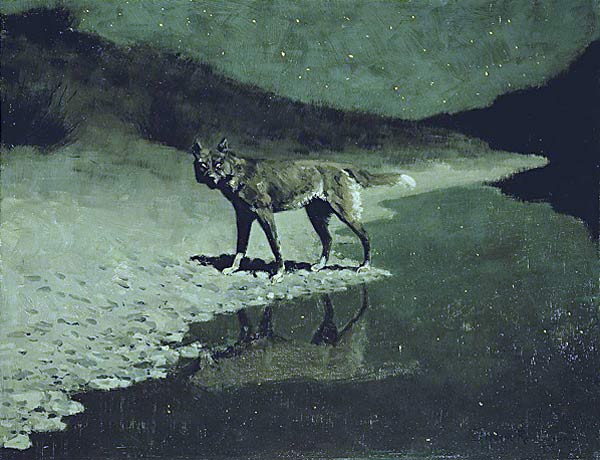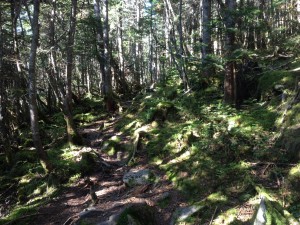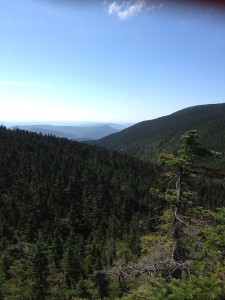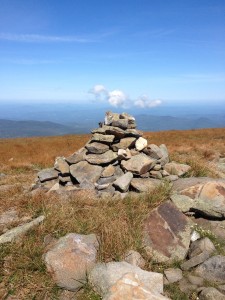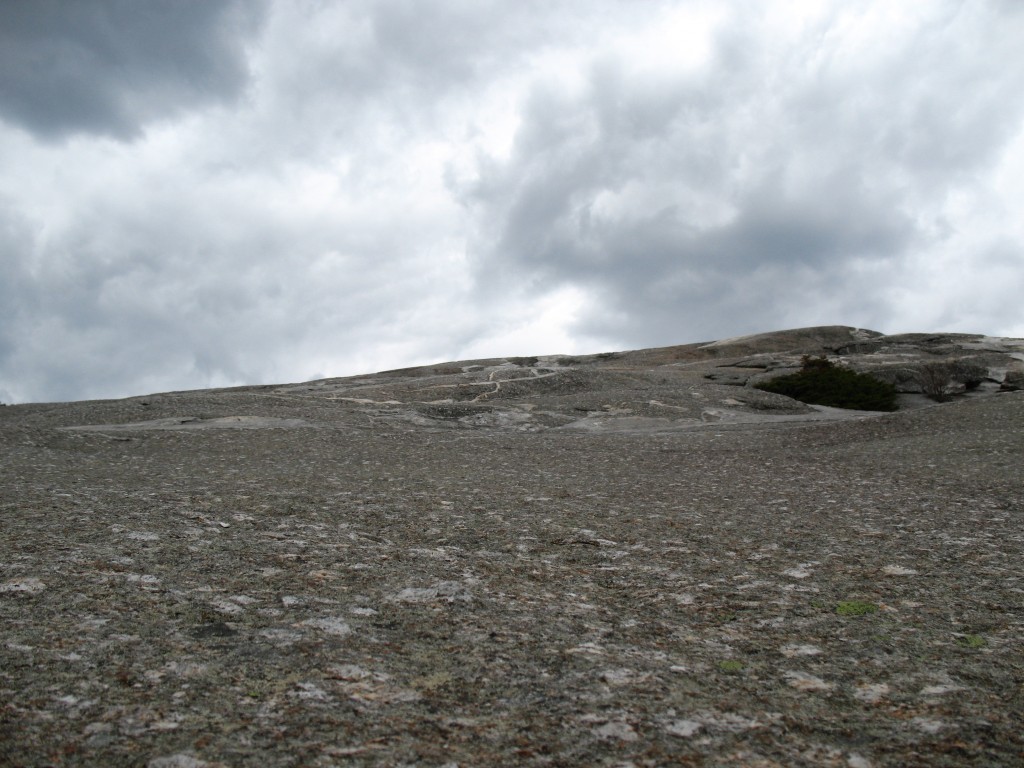…I frequently had to look up at the opening between the trees above the path in order to learn my route, and, where there was no cart-path, to feel with my feet the faint track which I had worn or steer by the known relation of particular trees which I felt with my hands, passing between two pines for instance, not more than eighteen inches apart, in the midst of the woods, invariably, in the darkest night. Thoreau, Walden
It’s evening, and we’ve gone inside. The day’s colors are damped down; the visual world shows in soft tones tending toward gray. I sit in a pool of lamplight and open a book, reach over and crank the window once to admit a trickle of coolish air and the woods-smell from the pines. The scented air slips in, and with it comes night’s announcement from our resident tree frogs: “TTHHRRRRIILLING,” they seem to trill. “TTHHRRRIILLING!”
The frogs’ call doesn’t exactly invite you out, but it wonders; so now do I. I tend to tuck my days in at dusk, favoring the armchair to the evening amble, favoring, as do many, the light to the dark. There are, of course, reasons for this, among them, post-dinner torpor, accumulated fatigue, and, at times, the bright, visual fire of the screen.
Recently, in high daylight, a fox ran through the yard; it appeared from beneath the rhododendrons and made a linear track across the grass, disappearing by the corner of the garage. I got a good look: this fox was a scruffy affair, with clots of fur hanging off a too-thin body in this season of plenty. His appearance, physical and temporal, suggested some sickness. Foxes are crepuscular in habit, night creatures really, when they are suggestions of motion bearing teeth amid shadows. What was night doing out in the light?
Neighbors immediately thought, disease, and they were probably right; I began to think about daytime visits from visions of the night, and then about my own visits with the night, times when the usual became strange and new, and I was awake to it.
As companion in this wondering, I had also my visits to a local exhibition at the Bowdoin College Museum of Art. Night Visions (ongoing until October 18th) is an inspired idea and collection that looks at American paintings at and of night from the mid-19th to mid-20th centuries, the time of transition from old-style darkness to our illuminated contest with night.
A walk through the exhibition is a walk back into another kind of darkness and then back into our own attempts to light the night. Both are, as the tree frogs remind me, “TTHHRRRRIILLING”; they reminded me also of Thoreau’s meditation on walking at night, which deepens to praise of getting lost, as a way awakening and being, finally, found in his Walden chapter, The Village (see passage at this post’s outset). Notably, I think, this meditation also immediately precedes his story of being jailed for nonpayment of taxes – another awakening venture into a form of darkness.
When you adopt a mind of night as you read, you may find that there’s also a fair amount of night-wandering and night-musing in and at Walden. In pursuit of being awake, Thoreau did not confine himself to the day.
And even now, Walden night-swimmers walk in from the west side woods to the little coves near the railroad tracks…not that I have ever done so…to make their acquaintance with the night.
Here’s a link to the Bowdoin College Museum of Art’s exhibition:http://www.bowdoin.edu/art-museum/exhibitions/2015/nv/

